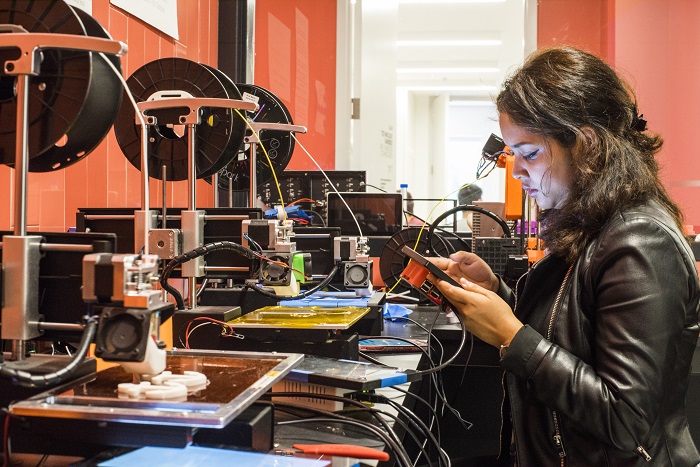Technology Sandbox offers a place to learn about emerging technologies and create innovative projects
Through the glass walls, students passing by witness the familiar sight of hundreds of heads bent down with eyes fixed on textbooks and computer screens. Yet just a few steps further down the hall is a vastly different scene. The smiles on the faces of people holding game controllers and screwdrivers break the oppressive stillness on the second floor of the Webster Library.
Last winter, the Technology Sandbox at Concordia was created based on the concept of makerspace—a public space that gives people access to machines and tools for small-scale projects. It is the brainchild of Concordia’s head librarian, Guylaine Beaudry, and part of the Webster Library’s renovations. According to Jasia Stuart, the Sandbox’s technology analyst, the idea is to offer students and staff experiential learning using new technologies in a hazard-free environment.
Stuart’s job is to decide what equipment is purchased for the space and what will be made available for rent. “It is about finding the fine balance between distinguishing established technologies from trends and finding interesting and stimulating material that is good value,” she said. In addition to the many machines available for use at the Sandbox, equipment can be rented for three days or two weeks by all Concordia students and staff members.
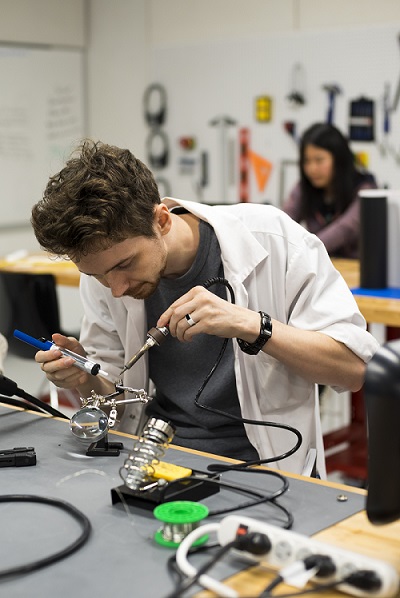
Stuart’s co-worker, Sean Cooney—known by his middle name, Tailor—is the Sandbox’s technician. He oversees the functioning of most of the space’s technology, including the 3D printers, the virtual reality (VR) headsets as well as the soldering and electronic equipment. Cooney also helps students use the machines and software.
The Sandbox’s services are divided into four categories: 3D printing, electronics, media creation and virtual reality. Each category has equipment that can be loaned-out, including alienware computers, Playstation VR, cameras, microphones, green screens and Raspberry Pi programming kits.
“We make sure to have a lot of the common tools that people would use for their projects,” Cooney said. Other machinery, such as a sewing machine, a vinyl sticker cutter, synthesizers, motor kits and brainwave scanners are available for use at the Sandbox.
Since its opening in February, the Sandbox’s users and following has steadily increased, according to Cooney. “The summer was certainly busier than expected,” he said. Thanks to a thriving community of volunteers, in addition to Cooney and Stuart, the Sandbox managed to handle an unprecedented number of people and projects, and prepared equipment for the new semester. “It got really busy during the end of the winter semester with all the engineering students finishing their projects, and I believe it’s safe to assume the same for this semester,” Cooney said.
Technology has been part of Cooney’s life for as long as he can remember. “I have just been intensely curious about technology,” he said. “Anything you need to know, we can teach you—material-wise, we usually have it all on hand.” Stuart mentioned it is not always easy to properly welcome newcomers to the Sandbox since she and her co-workers are often busy helping others. Yet, she and Cooney still make an effort to approach students who look intrigued by the machines, inviting them to print a small design from the 3D printers or try VR applications.
Stuart is also responsible for developing, planning and hosting workshops. “The workshops are there to help new people break into new technologies,” she said. Stuart pointed out that most workshops serve as introductions for Concordia staff or students to learn complicated vocabulary or interface in a structured environment. “It is also a way for students [who] are less assertive to come and know as much as others who would walk in and say, right off the bat, what they want to do,” she added. Workshops are held once or twice a week. “We try to keep them up to two hours for students to attend between their classes,” Cooney said.
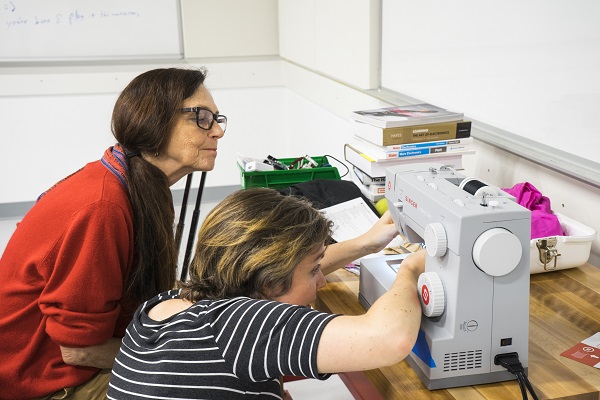
“There doesn’t have to be a direct correlation between what people are studying and what they do at the Sandbox,” Stuart said. The space counts many engineering and computer science students as regulars, but also welcomes students studying business, fine arts and humanities. “It is a place where you can have fun, learn and develop projects with people from different departments,” Cooney said. Described as a “dream job” by both Cooney and Stuart, the Sandbox is a place where people can create from their own imagination and meet like-minded people with a burning sense of curiosity.
Virtual reality
According to Cooney, VR is just a stepping stone to more advanced technologies. “Virtual reality is an emerging technology with a lot of potential recognized by people inside and outside of the tech community,” he said.
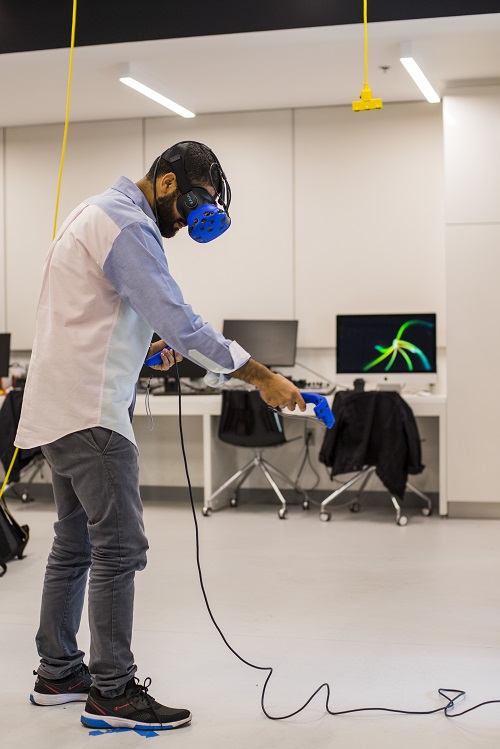
One of the Sandbox’s purposes is to teach people how to develop their own VR applications. Users can explore these skills through introductory workshops on Unity—a game developing software—and by using one of two computers with HTC vive headsets—which are currently the best on the market.
The headsets, equipped with a unique tracking system, allow instant localization and orientation of the users so they can move freely in a wide playing area. This allows students developing applications to create content using spatial movement, an important characteristic of VR. “This [system] varies from traditional virtual reality headsets, with which you need to look at a computer and sit down,” Cooney said.
In order to get newcomers accustomed to VR, the Sandbox uses a 3D painting application. “Very few people are going to be making their masterworks with this application, but it is a very polished, very tamed first experience,” Cooney said. Other applications, such as Google Earth, flight simulators, zombie games or a roller-coaster simulator are available once users feel more comfortable with VR.
The Sandbox also offers two student-made applications— application that explores the rules of gravity and a multidimensional application that allows players to pass through windows into a world of Van Gogh-style watercolours. “We are aiming to have as much student-generated content as possible,” Cooney said.
He added that he loves to see people try VR for the first time. “Just to see the reactions, varying from a fairly mute awe to a full-on wow of people being flabbergasted, is incredible.” For Cooney, VR is unique because there aren’t many experiences that allows someone to be surrounded by stars. He said he believes in the educational power of VR. “because it is so immersive. It is a very effective learning experience—you will definitely remember things,” he said.
Regulars at the Sandbox

Lloyd Bureau
A Concordia student majoring in Supply Chain Operations Management at the John Molson School of Business, Lloyd Bureau is one of many students who comes to the Sandbox to work on a personal project. “I heard about Technology Sandbox and their five 3D printers earlier this semester,” he said. “All the softwares are available for us and easy to use—all of this is free for students. It’s amazing how much support we get from Concordia.”
Bureau is the founder of a startup company called TRYNYTY, which makes freestyle scooter products. “We design, manufacture and distribute the products to specialized action sport retailers all around the world,” he said. All of TRYNYTY’s products are currently manufactured in Montreal. “We hope to keep it that way for as many of our products as possible,” Bureau added.
TRYNYTY currently sells four products that have been developed over the last year, in six different international stores. Among these locations is the California-based The Vault Pro Scooters. “It’s the biggest online retail store in the world for freestyle scooters,” Bureau said.
“Bureau regularly brings his scooter to the Technology Sandbox in order to improve and work on his products. “This is the first product we came up with,” he said, proudly holding up his scooter to show off the pegs he and his team created at the Sandbox using a 3D printer. “Basically, we are rethinking the scooter from A to Z, every single part on it, so that we can find a way to improve it,” he said.
Rahul Ranjan
Ranjan is doing his masters at Concordia in information system security. He is passionate about the technological world and is a staff member at the Sandbox. “I work here to help people. I help people learn about technology. If there is someone who wants to learn how to use the 3D printer, I am here to guide them,” he said.
Of the Sandbox’s five 3D printers, one is is multi-material—it creates products in more than one colour, contrary to the typical single-material 3D printers.
The first step to 3D printing at the Sandbox, Ranjan explained, is to bring in the design of the item. “We can also help you create the design here and download it,” he said. The design needs to be downloaded as an STL file. “After downloading the file, we use a software known as Slicer which converts the STL file into G-Code,” he said.
According to Ranjan, G-Code combines X, Y and Z axes to produce a three-dimensional result. “If there is a print that is five centimetres, it will create coordinate points and then the points will connect. Slicer will create the layers of your model,” he explained. The final step is to actually print the 3D version of the model.
The time it takes to print something in 3D depends on the size of the project, Ranjan said. Generally, for something three centimetres tall, it takes about two hours.
Ranjan also helps out with the Sandbox’s media creation lab, which offers users access to software such as Adobe Creative Suite, Photoshop and Illustrator. To create music, Garageband and Ableton are also available, and there are two synthesizers on-site for students to produce their own music. “If you have any idea, or if you think about a cool project and say ‘I want to do this, but how can I do this?’ We can help you get started with your idea,” Ranjan said.
Daron Kasbar
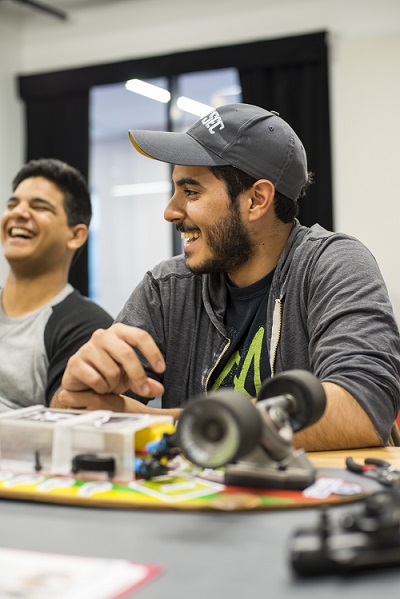
Daron Kasbar is also a regular at the Sandbox, where he spends his time building his own electric longboard. “It’s a fun project,” he said. “I didn’t do it for school. I did it mostly to help myself get around.” Kasbar is currently taking prerequisite courses in order to study software engineering at Concordia.
According to Kasbar, his electric longboard was inspired by Casey Neistat, a YouTuber from New York City who vlogs about electric longboards and skateboards. The electric longboards Neistat features on his YouTube channel are expensive, Kasbar said. “One board is around $1,000 to $2,000 minimum. I can’t afford it so I decided to make my own instead,” he said.
While Kasbar used some parts of his old longboard to create the new one, other elements, such as the enclosures for the electronic components and the motor, were made using the Sandbox’s 3D printers. “The wheels, the motor, the 3D printed parts, that’s all from me. The enclosures and all plastic parts that you see here came from my own 3D printing, and most of them are from my own designs,” he said.
Kasbar said building an electric longboard is not as complex as it seems. “It’s simple to build. You can do it on any longboard or skateboard. You just need a battery, an ESC (electric speed controler) and a motor,” he explained.
The longboard can go up to 30 kilometres an hour and can run for three straight hours at that speed. Kasbar also built in a crucial safety mechanism. “If there is a shortage of battery, the electric speed controller will plug itself out of the battery so that it doesn’t overheat” he said.
For Kasbar, the Sandbox is one of his favourite places at Concordia. “I can be myself and share my creativity with anyone,” he said. “The people here will either improve my ideas or understand what I’m talking about—I feel comfortable sharing my ideas here.”
